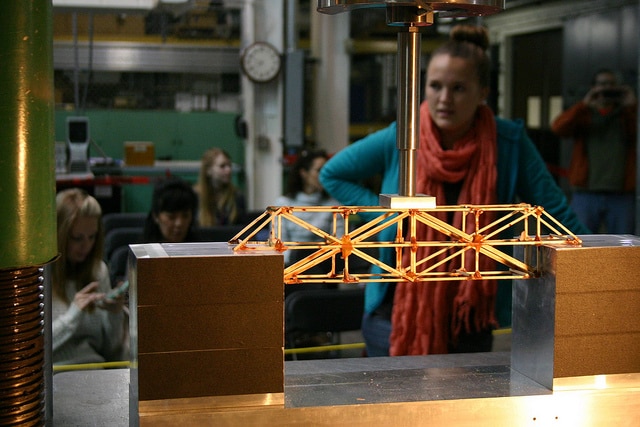Universities can often feel like places of endless optimisation, where grants, research papers, strategic documents and promotions applications, make the case for how much better the world is thanks to our research insights, technologies, methods, models and frameworks, patents, inventions and interventions. “Look on my H-index! Ye mighty and despair!” – or so the line would have gone, had Ozymandias been on the tenure track.
“Look on my H-index! Ye mighty and despair!” – or so the line would have gone, had Ozymandias been on the tenure track.
Claims to excellence abound throughout the university sector and generate their own ecosystems of measurement, validation, quality assurance and reward.
Discussions about our teaching are no exception to this rule. You will be hard pressed to find a university that doesn’t value, or at least claim to value, teaching. After all, teaching is central to what the university is and does. Even those who are research focused can still attest to the fundamental experience of going to university, being taught, and learning something. In this environment, it makes sense then that we might want to teach excellently and celebrate the achievements of those who do.
However, there are times when it is worth considering not only what metrics and measures we use to determine excellence (this being a discussion for another time) but what impact this discourse about teaching excellence might have on us as individuals. In short, what happens if you’re not excellent? What happens is you’re just good? Or worse, if you’re really struggling? In this case it may be that “le mieux est l’ennemi du bien” (the best is the enemy of the good) (Voltaire 1764). In this case it might be that aims towards ‘teaching excellence’ may lead to little improvement at all. Especially when workloads are packed with other things and semester feels like something to be ‘survived’.
It’s worth acknowledging that thought the University’s best teachers and best teaching can be inspiring that they can also be intimidating. We all know the person in our Faculty who can command a large lecture, whether through some kind of on-stage ‘presence’, humour or innate likability. Similarly, individuals or teaching teams that win national or international awards, invent new methods, build software and transform failing subjects can be equally unnerving even when their processes and methods are laid bare. The challenge with exceptionality is that it is, by its own definition, hard to replicate. Compounding this, is the fact that excellence is often something that we often only see in its end state. The grit, graft and failings that make up the journey to teaching excellence are either rendered invisible or are tamed through a retrospective narrative of “overcoming the odds”. This is especially the case in the educational technology discourse where the story flows from “this was my very difficult problem” through to “this is my tool” to the climatic “we solved it – students loved it, students learnt”. Though less exciting (and violent) than Game of Thrones or other epic sagas, the EdTech narrative arc is usually one of success where the technology, technologist or educator plays the part of Hero. This erasure or taming of educational struggles makes it hard to make sense of the very raw feeling experienced when the Friday evening lecture falls asleep on you or you run a tutorial activity that no-one “got”. In these moments the story of teaching can feel tragic or, worse, futile.
And though this parallels between teaching struggles and research are easily drawn, somehow, because we’ve formally learned about how to ‘do’ research, we may have more developed coping mechanisms for failures, ambiguity and Reviewer B’s snarky feedback. Furthermore, to some extent it may make sense for us to hide our teaching failings. For many of us this was how we survived our first semester(s)/year(s) of employment within the university sector, when (with no formal training) we were left with a sizeable class of expectant students, a monster workload and a bad case of imposter syndrome. Though this is changing, with most Universities investing in professional development and training, this hangover and its attendant insecurity can be hard to shift; more so as teaching itself typically places us in a position of authority and expertise to our ‘novice’ students. In this environment it can be hard to confess to not being excellent or not knowing what to do.
In these instances it may be useful to focus less on exceptionality and rather on what is good and, more importantly, what is feasible. These kind of approaches allow us to improve or re-engage with teaching and, as a result, enjoy what we do without needing to give up on research, read the entirety of the higher education literature or sacrifice anymore of our sleep than we already do. By doing so we might overcome the paralysis induced by excellence and give new things a go in the time we have available. This thoughtful and almost playful approach is supported by big concepts like “Teaching as a Design Science” which borrows from what design and technology has long known to be true, namely that prototypes are useful and minimum viable products (MVBs) essential. Paradoxically, approaches that allow us to test early, fail fast and respond to things as we go along are more likely to lead to good teaching than many hours spent obsessing over a tightly controlled and refined series of powerpoint slides. Books such as James Lang’s Small Teaching and its equally readable sister series in the Chronicle of Higher Education offer practical ways to go about doing this. And while the language of ‘small teaching’ and ‘iterative design’ might feel new, to some extent such incremental approaches are what many good teachers have been doing for a while.
approaches that allow us to test early, fail fast and respond to things as we go along are more likely to lead to good teaching than many hours spent obsessing over a tightly controlled and refined series of powerpoint slides
To suggest that we all engage with teaching in small and feasible ways is not to suggest that we give up on the idea of excellence or turf out the ‘bigger’ things like curriculum renewal, teaching awards, grants, and Graduate Certificates. For healthy and diverse development, teaching and learning needs a range of things within its ecosystem. However, it is important for all of us to remind ourselves that, for teaching – like many other things, large outcomes are a result of a series of smaller exploratory steps – ones that all of us, at whatever stage in our careers, can take. In doing so we can all take back some autonomy over how we teach, from labs and tutorials through to the large lecture. In making small habitual changes we can re-engage with teaching and learning as something that is not only creative and exploratory for our students – but for ourselves as well.
Tips for small teaching
STEP 1: Get inspired
Find sources of inspiration. This could be written material, faculty or university talks, or simply have a coffee or peer observation with a colleague whose teaching you’d like to know more about. Conversely, have a look at previous student feedback or peer reviews of your subject and see whether there is anything there that you want to focus on addressing. For reading James Lang recommends setting a commitment to read one book on teaching and learning per year. Since this post is about small teaching – why not start with this: Small Teaching and work your way to other titles. Alternatively, check out web resources like Gibbs’ 53 Powerful Ideas, our very own Teaching@Sydney and the Educational Innovation Yammer Group.
STEP 2: Make a commitment to do something new
Using whatever inspiration you have found, hone in on something you can do or try within your class. This could be anything from including a quiz, demo or worksheet in your class, to simply asking questions (and waiting —- for a student response). You may want to try a new tool, technology or activity that you’ve come across – especially if it won’t require huge amount of effort to implement.
STEP 3: Reflect on what you’ve done – did it work?
Reflect on what you’ve done – did it work? Did the students seem engaged? How do you know it achieved what you intended? What did you learn from adding this or that to your teaching? To find out you can directly ask students what they thought, talk it through with a colleague or go back to the reading – why did it work or fail?
STEP 4: Adjust and repeat.
If it worked then keep it, build upon it or extend it. If it didn’t work then try something else.





